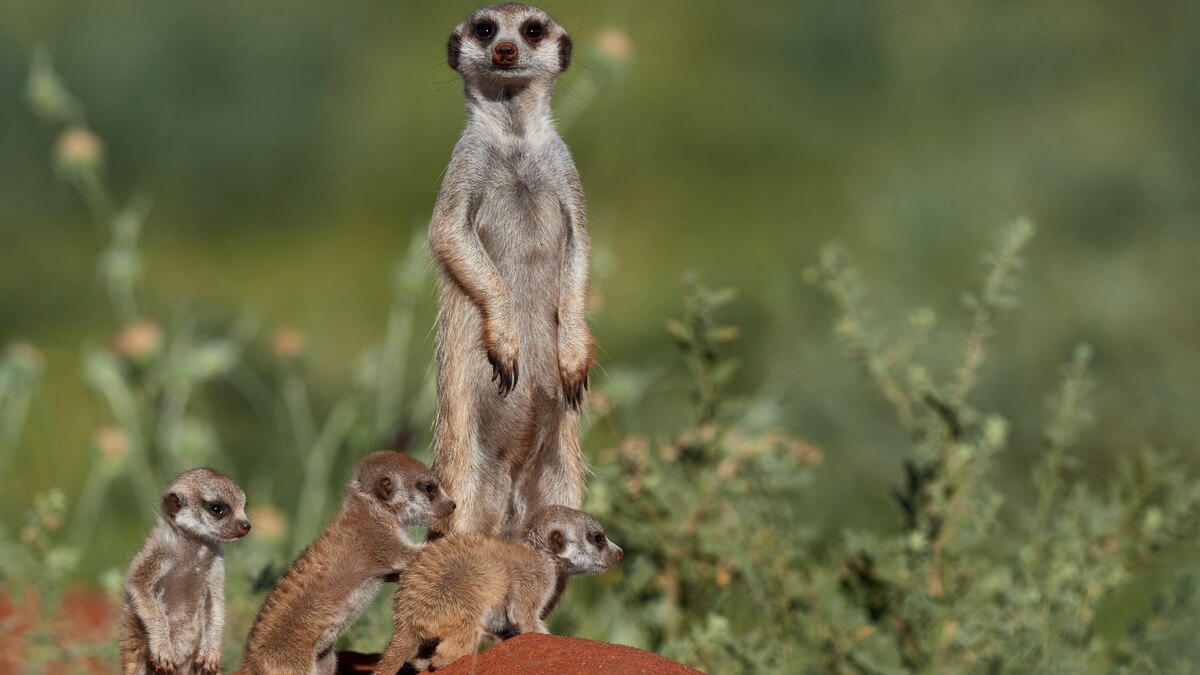- Animals
- Explainer
Biologists have a definition for teaching that very few animals actually meet, such as orcas and meerkats. Here are a few more from the head of the class.
Published August 31, 2022
7 min read
Animals do all kinds of amazing things—and how they learn do to them has long intrigued scientists.
Some knowledge is inherited: Monarch butterflies, for instance, migrate from Mexico to Canada using a roadmap in their genes. Other species mimic skills and behaviors, like a gray wolf cub observing its pack hunt an elk. And still others learn how to survive via trial and error, such as the New Caledonian crows that figured out dropping pebbles into a pitcher raises its water level.
But among non-humans, the true teacher is a rare breed, with only a handful of species, such as some birds, primates, and insects, making the grade.
For a long time, “there was a real resistance to believe that animals teach, because it really is one of the hallmarks of humanity that makes us special,” says Lisa Rapaport, a behavioral ecologist at Clemson University.
Biologists also have created a specific definition of what constitutes an animal teacher: They must change their behavior in front of a student, with no immediate benefit to themselves, and the student must show that they’ve gained knowledge or skills, says Rapaport.
Here are notable animal teachers who make sure school is always in session.
When your food bites back
Meerkats of sub-Saharan Africa live in social “mobs” of up to 30 animals, in which hands-on instruction is part of the job for parents and other adult helpers who collaboratively teach youngsters.
Various species of scorpions are prominent on the meerkat menu, but their deadly sting means they require careful handling. That’s why, at first, parents deliver the arachnids dead to their newborns. As the pups grow, meerkat teachers make their lunch lessons gradually more difficult, such as removing the stingers from live scorpions to render them harmless and letting their young practice dispatching them.
As pups gain skills and confidence handling the scorpions, their teachers bring them gradually more able-bodied scorpions until the pupils have learned to safely remove the stinger and kill prey for themselves. (See how meerkats defend their mobs against predators.)
Though adult meerkats dedicate time to teaching that could be spent on other activities, it works to their advantage. Since many meerkats in a mob are closely related, keeping more of the group safe and alive perpetuates the family genes.
Music lessons
Taking early learning to the extreme, these Australian birds begin teaching their young before birth. The mother superb fairy-wren sings to her eggs as often as 30 times per hour, exposing the embryos to a secret musical passcode that’s unique to each female. Once out in the world, the hatchlings will use the sound to ask for food from mom and dad, who also learns the tune.
In one study, Sonia Kleindorfer, a biologist at Flinders University in Adelaide, and colleagues swapped eggs between nests of wild birds and found that hatchlings produced the call of the foster mother who sang to them, showing that the young don’t have a genetic understanding of the calls. (Read how a bird uses a tool to make music.)
There’s a good reason for these singing lessons: Cuckoos often lay eggs in the wrens’ nests so that they can pass off the burden of incubating and raising their own young, a phenomenon called brood parasitism. But cuckoo parents do this too late for their embryos to learn the call, so caring only for young that know the call ensures wrens don’t waste valuable time and food on feeding imposters.
Showing a friend the way
When a rock ant finds a new food source or nest site, it leads another ant there with a technique called tandem running. The knowledgeable ant guides the novice along the route, pausing along the way so that the student can memorize each landmark. The teacher relies on feedback from the pupil, which affirms when each lesson is learned; an antenna tap lets the teacher know it’s time to move on.
“The teaching ant gets another individual into the process of agreeing on a much better nest site. This will benefit all of the ants in the colony and help them pass their genes more abundantly into the next generation,” says Nigel Franks, emeritus professor of biology at the University of Bristol in the U.K., who co-authored a study in 2006 documenting the behavior—the first published evidence of a non-hu

